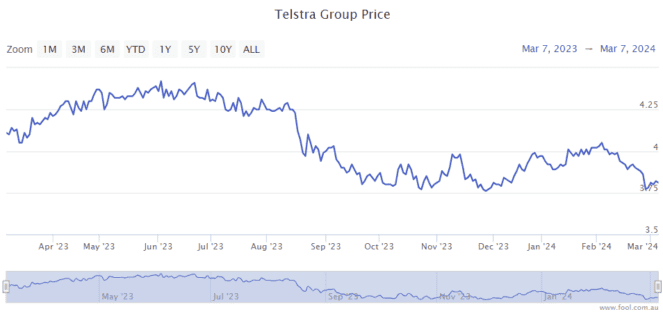The Telstra Group Ltd (ASX: TLS) share price is close to a 52-week low, making it a prime candidate to invest in because of the underlying strength of the company, in my opinion.

Telstra is the leading telecommunications business in Australia, with the most subscribers and the biggest network coverage.
While it's possible the Telstra share price could fall even further, I think investors should focus on the following things.
Growing subscribers
The business continues to grow its number of mobile subscribers, which is really helping revenue for that segment of the business. I believe the mobile segment is the company's key division.
Its mobile division saw a 6% growth of mobile service revenue in the FY24 first-half result.
Mobile services in operation (SIO) grew by 4.6% year over year, with growth across wholesale, prepaid, and postpaid. I think this is a sign of how much the public values Telstra's network and places it above the competition. More users mean the business has more revenue to invest in its network to maintain (and grow) its market position.
The strong market position is allowing the business to implement price increases (which is linked to inflation). The business saw 3.4% average revenue per user (ARPU) growth, excluding prepaid one-off from a product migration.
Ongoing subscriber growth is key for the business, both for revenue and for its operating leverage.
Operating leverage
When a business is able to grow profit faster than revenue, it's a great sign for shareholder returns. Ultimately, it's the profit that pays for dividends and profit growth is usually the driver of pushing the Telstra share price, or any share price, higher over time.
Once the infrastructure has been built, additional subscribers mean the fixed cost is spread among more users.
In the HY24 result, total income rose 1.2%, underlying earnings before interest, tax, depreciation and amortisation (EBITDA) grew 3.1%, net profit after tax (NPAT) rose 11.5% and earnings per share (EPS) increased 12%.
The important mobile division saw total income growth of 4% and EBITDA growth of 13%.
Telstra is demonstrating what I want to see from rising profit margins. The company reported that underlying costs only grew by 0.4% in the result, which is an impressive result considering all of the inflation in Australia.
Between FY21 and FY25, it's aiming to grow its underlying EPS at a compound annual growth rate (CAGR) in the 'high teens'.
Dividend yield
The lower Telstra share price means the company is now offering a larger dividend yield.
In the first half of FY24, the interim dividend increased by 5.9% to 9 cents per share.
Commsec numbers suggest the business could pay an annual dividend per share of 18 cents in FY24, 19 cents per share in FY25 and 20 cents per share in FY26. That means the projected grossed-up dividend yield for the current year is 6.75%, and then 7.1% in FY25 and 7.5% in FY26.








